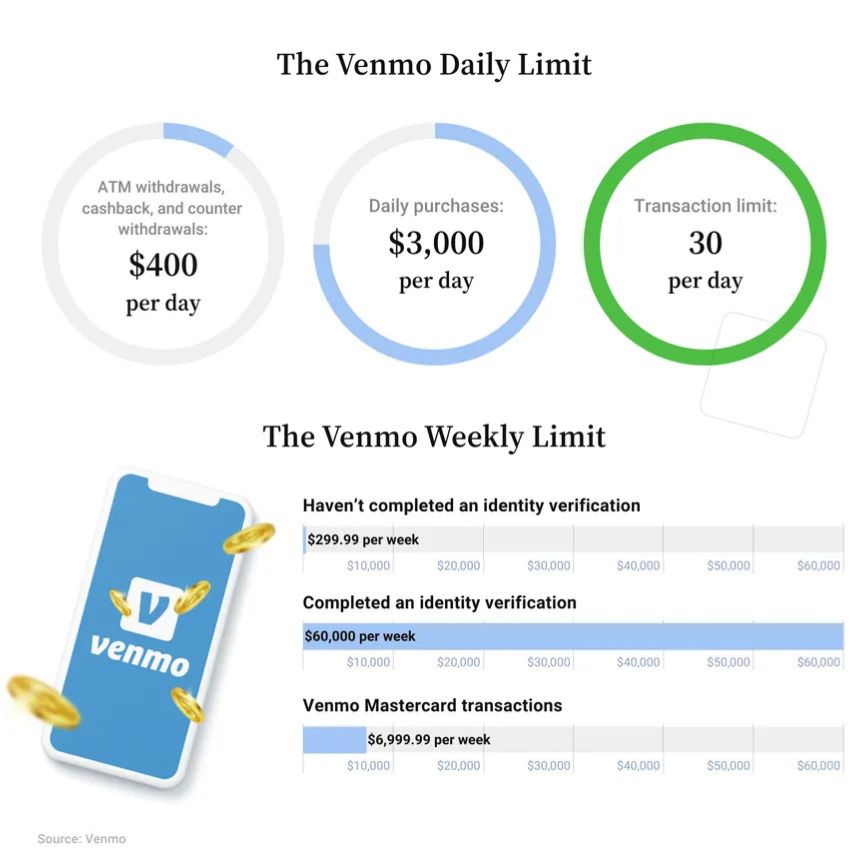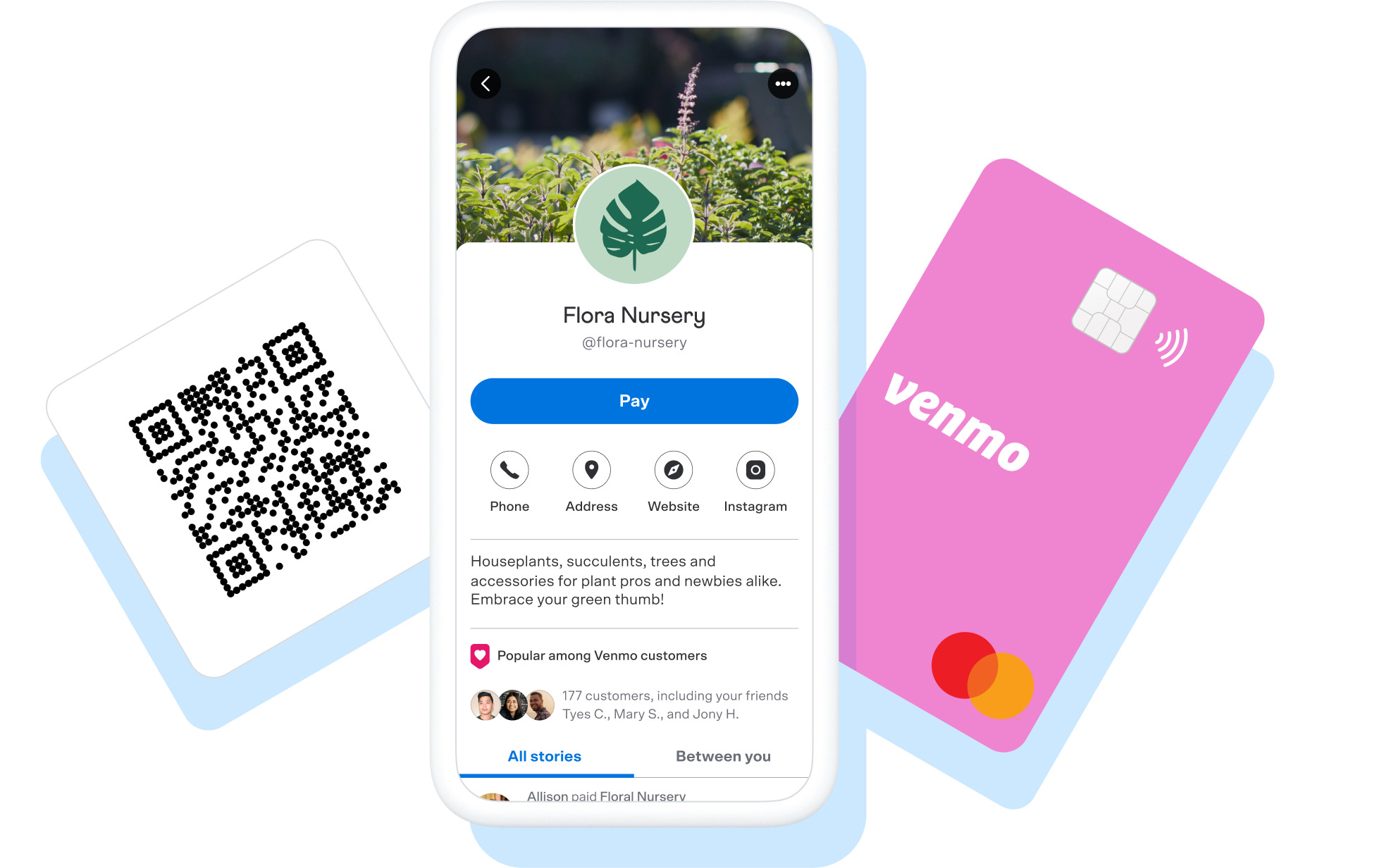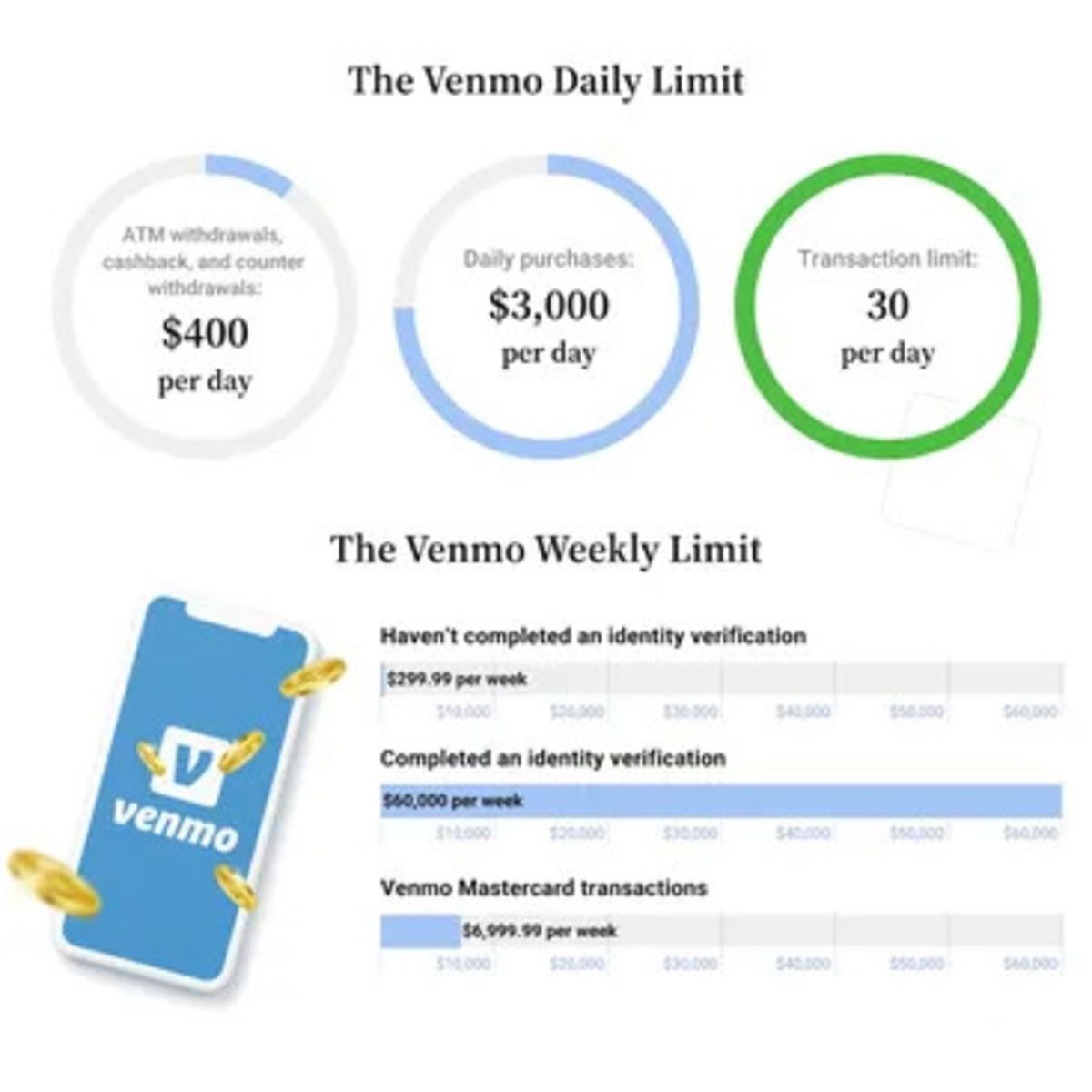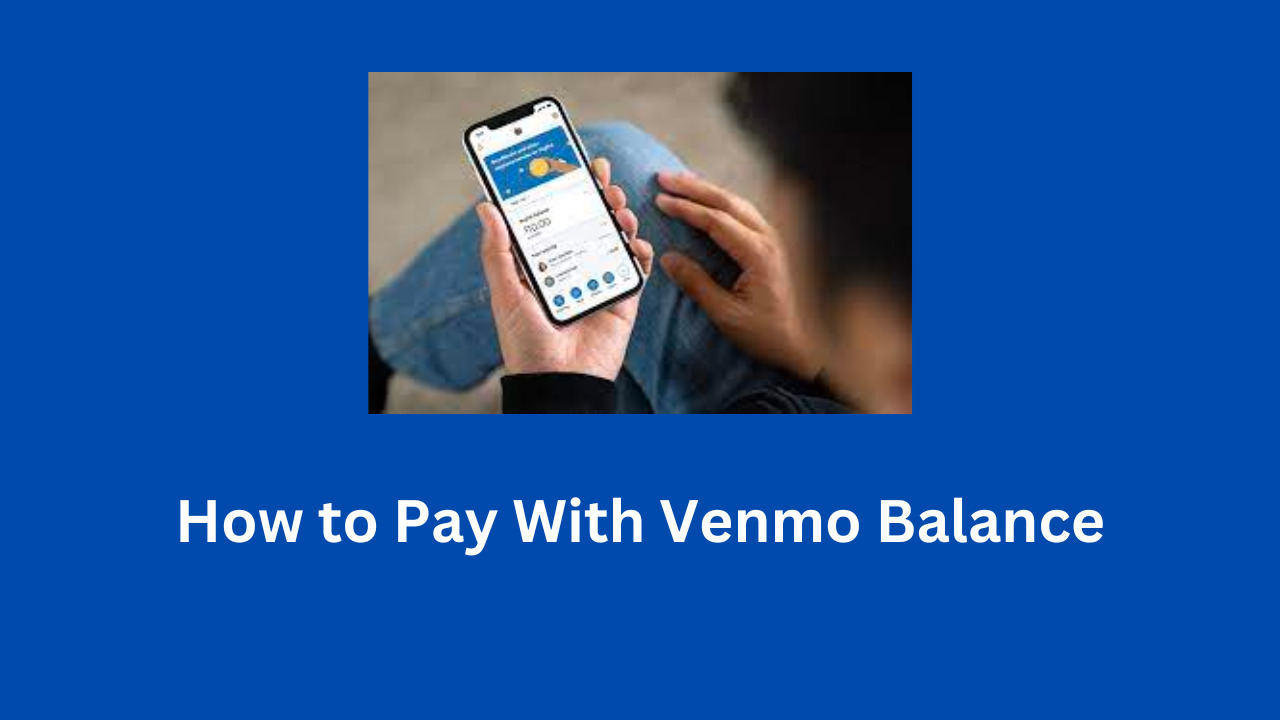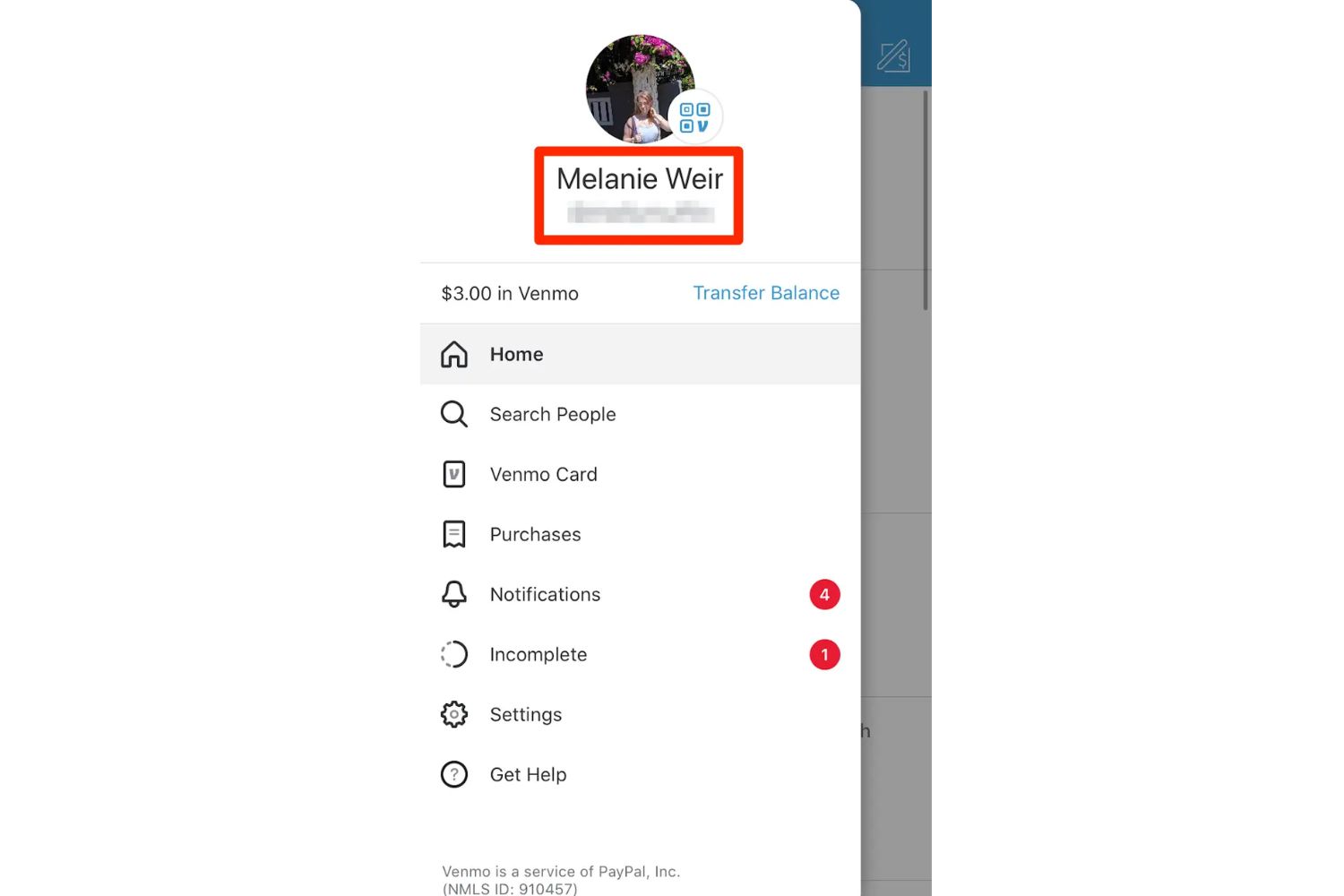What is Venmo?
Venmo is a popular digital payment service that allows users to send and receive money with ease. It was founded in 2009 and has gained immense popularity, especially among younger demographics. What sets Venmo apart is its social component, as it allows users to share their transactions and interact with friends in a social feed-like interface. Whether you want to split the bill at a restaurant, pay your share of rent, or contribute to a group gift, Venmo provides a convenient way to transfer funds.
Using Venmo is simple and user-friendly. Once you’ve downloaded the app, you can connect it to your bank account or debit card to fund your Venmo balance. From there, you can send money to anyone in your contact list who also has a Venmo account. It’s as easy as typing in the amount, adding a note or emoji to personalize the transaction, and hitting send. The recipient will receive a notification and can transfer the funds to their linked bank account, or leave them in their Venmo balance to use for future transactions.
What makes Venmo even more appealing is its seamless integration with social media platforms. Users can add comments and emojis to their transactions, which can be seen by their friends or followers. This feature adds an element of fun and allows for more engaging payment experiences. You can also view your friends’ transactions and see how they’re spending their money, creating a sense of transparency and casual social interaction.
In addition to its basic functionality, Venmo also offers additional features such as Venmo Card and the ability to make online purchases. The Venmo Card allows users to spend their Venmo balance at physical retail locations where Mastercard is accepted. This offers users the convenience of accessing their funds without the need to transfer them to a bank account. Furthermore, Venmo can be used to make online purchases with authorized merchants, eliminating the need for inputting credit card information and simplifying the checkout process.
Overall, Venmo has revolutionized the way we transfer money and has become an integral part of digital payments. Its user-friendly interface, social integration, and additional features make it a convenient and popular choice for peer-to-peer transactions. Whether you need to split a bill, pay a friend back, or make online purchases, Venmo offers a secure and efficient solution.
Sending Money through Venmo
Sending money through Venmo is fast, convenient, and hassle-free. Whether you need to reimburse a friend for dinner or contribute to a group gift, Venmo provides an easy way to transfer funds. Here’s how you can send money through Venmo:
- Download the Venmo app: Start by downloading the Venmo app from the App Store or Google Play Store. Once installed, create an account or log in if you already have one.
- Link your bank account or debit card: To fund your Venmo transactions, link your bank account or debit card to your Venmo account. This allows you to transfer money directly from your bank account or use your debit card to make payments.
- Add a recipient: To send money, you’ll need to add the recipient to your Venmo contacts. You can search for their username, phone number, or email address to locate them.
- Enter the amount: Once you’ve selected the recipient, enter the amount you wish to send. Venmo allows you to send both whole dollar amounts and decimal amounts for greater precision.
- Add a note: While not mandatory, adding a note to your transaction can be helpful for both you and the recipient to identify the purpose of the payment. You can also use emojis to make your note more expressive.
- Choose your privacy settings: Venmo allows you to control the visibility of your transaction. You can choose to make it either public, visible only to your Venmo friends, or completely private.
- Review and confirm: Before finalizing your transaction, review the details including the recipient, amount, and note. Once you’re satisfied, click the “Pay” button to send the money.
- Transaction notifications: Both the sender and recipient will receive notifications from Venmo regarding the transaction. This helps to keep everyone updated and ensures transparency.
It’s important to note that while Venmo is a widely used and trusted platform, it’s always a good practice to double-check the recipient’s information before sending money. In case of any mistakes or issues, Venmo provides customer support to assist users in resolving their queries.
Overall, sending money through Venmo is a straightforward process that can be completed within a few simple steps. Whether you’re splitting expenses, making payments, or sending money for any other reason, Venmo offers a user-friendly platform for seamless money transfers.
Venmo Sending Limits
Venmo imposes certain sending limits to ensure the security and integrity of its platform. These limits dictate the maximum amount of money that you can send or receive within a specific time period. Understanding these limits is important to plan your transactions accordingly. Here are the sending limits for Venmo:
- Standard User Limits: By default, new Venmo accounts have a sending limit of $299.99 per week. This weekly limit applies to the total amount of money you can send from your Venmo account.
- Verified User Limits: To increase your sending limits, you can become a verified user. This involves confirming your identity by providing additional information to Venmo, such as your legal name, address, date of birth, and Social Security number. Once verified, the sending limits increase to $4,999.99 per week.
It’s important to note that Venmo’s sending limits apply to both individual transactions and the cumulative amount sent within a given time frame (typically 7 days). For example, if your limit is $299.99 per week, you cannot send a single transaction exceeding this amount, nor can you send multiple transactions that add up to more than $299.99 within a week.
These limits are in place to prevent fraudulent activities, unauthorized transactions, and ensure compliance with financial regulations. By setting limits, Venmo aims to protect its users and maintain the integrity of its platform.
Although the standard and verified user limits are sufficient for most everyday transactions, you may encounter situations where you need to send larger amounts. In such cases, you may need to explore alternative payment methods or consider other platforms that offer higher sending limits.
It’s important to keep in mind that Venmo’s sending limits may change over time. To stay updated on the most recent limits, you can refer to Venmo’s official website or contact their customer support.
In summary, Venmo has certain sending limits in place to ensure the security and compliance of its platform. New accounts have a standard sending limit, which can be increased by becoming a verified user. Understanding these limits is crucial to effectively manage your transactions through Venmo.
Identity Verification and Sending Limits
Identity verification is an essential process that can help increase your sending limits on Venmo. By verifying your identity, you not only demonstrate your credibility but also gain access to higher transaction limits. Here’s what you need to know about identity verification and its impact on sending limits:
When you first create a Venmo account, you start with the standard user sending limit, which is $299.99 per week. To increase this limit, you can choose to become a verified user by providing additional personal details and confirming your identity.
Verification involves submitting information such as your legal name, address, date of birth, and Social Security number. Venmo may also request supporting documents such as a photo of your ID or a proof of address to validate your identity.
Once your identity is successfully verified, your sending limits are increased to $4,999.99 per week. This higher limit allows you to send larger amounts of money and facilitates more substantial transactions through the Venmo platform.
Verification not only increases your sending limits but also enhances the overall security of your Venmo account. By verifying your identity, you add an extra layer of protection against unauthorized access and potential fraudulent activities.
It’s worth noting that identity verification is a common practice among financial service providers to comply with anti-money laundering (AML) and know your customer (KYC) regulations. These regulations are in place to prevent illegal activities and ensure a secure financial environment for users.
While identity verification is not mandatory for all Venmo users, it is highly recommended if you wish to enjoy the benefits of higher sending limits and enhanced account security. Additionally, many users may find that identity verification is a necessary step for using Venmo for larger transactions or business purposes.
If you encounter any issues during the identity verification process or have questions, Venmo provides customer support to guide you through the necessary steps.
In summary, identity verification plays a crucial role in increasing your sending limits on Venmo. By verifying your identity, you not only gain access to higher transaction limits but also add an extra layer of security to your Venmo account.
How to Increase Venmo Sending Limits
If you find yourself needing to send larger amounts of money through Venmo, you may want to increase your sending limits. Venmo offers users the opportunity to raise their limits by following these steps:
- Become a verified user: The first and most crucial step to increasing your Venmo sending limits is to become a verified user. To do this, navigate to the “Settings” tab in your Venmo app and select “Identity Verification.” Follow the prompts to provide the required information and documentation, such as your legal name, address, date of birth, and Social Security number.
- Confirm your bank account: Linking and confirming your bank account can also contribute to higher sending limits. By doing this, you add an extra layer of trust and reliability to your Venmo account, which may result in increased limits.
- Upgrade to a business account: If you plan to use Venmo for business purposes, consider upgrading to a business account. Business accounts offer additional benefits and features tailored to meet the needs of businesses. Upgrading may provide higher sending limits specifically designed for commercial transactions.
- Consistently use Venmo: Using Venmo regularly and demonstrating responsible financial behavior can help in increasing your sending limits. Venmo takes into consideration factors such as your transaction history, account activity, and usage patterns when determining your limits. Consistent use of the app may result in gradual limit increases over time.
- Reach out to Venmo support: If you have a specific need for higher sending limits or are experiencing limitations that hinder your usage of Venmo, you can reach out to Venmo support for assistance. They may be able to provide additional guidance or consider individual circumstances when evaluating your sending limits.
It’s important to note that while Venmo provides the option to increase sending limits, they have their own policies and guidelines that determine the limit increments. Not all users may qualify for significant increases, and individual limits may vary based on various factors.
Additionally, it’s crucial to ensure that the information and documentation provided during the verification process are accurate and up to date. Any discrepancies or inconsistencies may hinder the verification process and limit your ability to increase your sending limits.
In summary, to increase your Venmo sending limits, you’ll need to become a verified user, confirm your bank account, and consider upgrading to a business account if applicable. Maintaining a consistent usage pattern on Venmo and reaching out to Venmo support for specific needs may also help in achieving higher sending limits.
Security and Fraud Prevention
Ensuring the security of your financial transactions is of utmost importance, and Venmo takes several measures to protect its users from fraud and unauthorized activities. Here are some key aspects of Venmo’s security and fraud prevention practices:
Encryption and Secure Technology: Venmo employs industry-standard encryption to safeguard your personal and financial information. This encryption ensures that your data is encrypted during transmission and securely stored on Venmo’s servers. Additionally, Venmo regularly updates its security protocols to stay ahead of potential threats.
Two-Factor Authentication: Venmo offers a two-factor authentication (2FA) feature to provide an extra layer of protection for your account. This feature adds an additional step to the login process, requiring you to verify your identity through a second factor such as a unique code sent to your registered phone number or email address.
Fraud Monitoring: Venmo employs sophisticated fraud monitoring systems to detect and prevent fraudulent activities. This includes analyzing transactions, monitoring account activity, and implementing machine learning algorithms to identify anomalies and suspicious behavior.
Dispute Resolution: In case of unauthorized transactions or disputes, Venmo provides a dispute resolution process. You can report any fraudulent or unauthorized activity to Venmo’s customer support, who will investigate the matter and take appropriate measures to resolve the issue.
Privacy Controls: Venmo offers various privacy settings that allow you to control the visibility of your transaction history and personal information. You can choose to keep your transactions private or share them with specific friends or the public. Additionally, you can control the appearance of your transactions in the social feed to maintain your desired level of privacy.
Education and Security Tips: Venmo regularly provides security tips and educational resources to users, aiming to enhance awareness of potential risks and best practices for secure transactions. They recommend regularly updating passwords, being cautious of phishing attempts, and reviewing transaction history for any unauthorized activity.
Continuous Monitoring: Venmo’s security and fraud prevention measures are continuously reviewed and updated to adapt to emerging threats and ensure the safety of user accounts. They work closely with security experts and invest in advanced technologies to stay proactive in addressing potential risks.
It’s important to remember that while Venmo takes significant measures to ensure security, users also play a vital role in maintaining their account’s integrity. It’s recommended to set a strong and unique password, avoid sharing sensitive information, and be vigilant of any suspicious activity on your Venmo account.
In summary, Venmo prioritizes the security and fraud prevention of its users. With encryption technology, two-factor authentication, fraud monitoring systems, dispute resolution processes, privacy controls, educational resources, and continuous monitoring, Venmo strives to provide a secure environment for financial transactions.
Is Venmo the Right Choice for Big Transactions?
When it comes to making big transactions, it’s important to evaluate whether Venmo is the right choice for your specific needs. While Venmo is a convenient and widely-used payment platform, there are several factors to consider before using it for larger transactions:
Sending Limits: Venmo imposes sending limits on both standard and verified user accounts. If you anticipate sending a large sum of money that exceeds Venmo’s limits, you may need to consider alternative payment methods or platforms that offer higher limits. It’s important to be aware of these limitations to ensure a seamless transaction process.
Transaction Speed: While Venmo transactions are typically processed quickly, the speed may vary depending on various factors such as bank transfers and verification processes. If time is of the essence for your big transaction, it’s crucial to consider the potential delays that may occur with Venmo and explore alternative options that offer faster transfer speeds.
Security and Fraud Prevention: While Venmo implements several security measures and fraud prevention practices, it’s essential to assess whether you are comfortable with the level of security provided for big transactions. If you have concerns, you may prefer utilizing a payment method that offers additional layers of security, such as escrow services or buyer protection programs.
Reversibility: Once a payment is sent through Venmo, it is typically irreversible, especially if the recipient has transferred the money out of their Venmo balance. If you anticipate the need for reversibility or dispute resolution for a big transaction, it’s important to carefully evaluate whether Venmo’s policies align with your requirements or consider utilizing payment methods that offer stronger buyer protection or transaction dispute resolution processes.
Transaction Documentation: Venmo provides basic transaction records, including sender, recipient, and amount, which can be accessed through the app. However, if you require more comprehensive documentation or professional invoices for accounting or legal purposes, it may be beneficial to explore payment methods or platforms that offer more robust documentation features.
Business Transactions: If you plan to utilize Venmo for big transactions related to your business, it’s important to consider the specific terms of service and policies surrounding commercial use. Venmo offers business accounts with additional features, but it’s essential to understand the limitations and requirements associated with business transactions on the platform.
Ultimately, the decision to use Venmo for big transactions depends on your specific circumstances and priorities. While Venmo offers convenience and ease of use for everyday transactions, it’s crucial to carefully evaluate factors such as sending limits, transaction speed, security, reversibility, documentation, and suitability for business purposes.
Considering these factors will help you determine whether Venmo is the right choice for your big transactions or if alternative payment methods or platforms better suit your needs.
Venmo vs Other Payment Apps: Sending Limits Comparison
When it comes to making payments and sending money digitally, there are several mobile payment apps available in the market. Each app has its own set of features, including sending limits. Let’s compare Venmo’s sending limits with other popular payment apps:
- Venmo: Venmo has a standard sending limit of $299.99 per week for new accounts. However, by becoming a verified user, you can increase your sending limit to $4,999.99 per week. These limits apply to both individual transactions and the cumulative amount sent within a given time frame.
- PayPal: As the parent company of Venmo, PayPal offers higher sending limits. For unverified personal accounts, the sending limit is $1,999.99 per week. Verified personal accounts have a sending limit of $10,000 per week. PayPal also offers separate sending limits for business accounts, which vary based on different factors.
- Cash App: Cash App, also known as Square Cash, has a similar sending limit to Venmo. The standard sending limit for unverified users is $250 per week, but this can be increased to $7,500 per week for verified users. Cash App allows for higher transaction amounts compared to Venmo for both unverified and verified users.
- Zelle: Zelle offers higher sending limits compared to Venmo. The exact limits vary based on your bank’s policies, but most banks allow for sending up to $2,500 per day and $10,000 per month through Zelle. These limits may be increased for some users, depending on their account history and relationship with the bank.
- Google Pay: Google Pay has generous sending limits, allowing users to send up to $10,000 per transaction and up to $10,000 within a seven-day period. These limits are applicable to both personal and business accounts.
It’s important to note that these sending limits may vary and are subject to change based on the policies of each payment app and financial institution. Additionally, certain payment apps may impose restrictions or fees for specific types of transactions, such as international transfers or business transactions.
When choosing a payment app, it’s important to consider not only the sending limits but also other factors such as transaction speed, user interface, customer support, security measures, and compatibility with other services or platforms.
In summary, Venmo offers moderate sending limits that can be increased by becoming a verified user. Other payment apps like PayPal, Cash App, Zelle, and Google Pay provide higher sending limits, depending on account verification status and other factors. Understanding the sending limits of each app will help you choose the one that best suits your transaction needs.
Conclusion
Venmo is a popular and convenient digital payment service that offers an easy way to send and receive money. With its user-friendly interface, social integration, and additional features like the Venmo Card and online purchases, Venmo has become a go-to choice for many individuals and businesses.
When using Venmo, it’s important to be aware of the sending limits imposed by the platform. New accounts start with a standard sending limit, which can be increased by becoming a verified user. Verifying your identity not only raises your sending limits but also enhances the security of your account.
While Venmo is suitable for everyday transactions, it’s essential to evaluate if it’s the right choice for big transactions. Factors such as sending limits, transaction speed, security features, reversibility, and documentation requirements should be considered. Depending on your specific needs, you may find other payment apps with higher sending limits or additional features that better align with your preferences.
Venmo prioritizes the security and fraud prevention of its users through encryption technology, fraud monitoring systems, and two-factor authentication. However, it’s important to practice good security habits and exercise caution to protect your account.
In conclusion, Venmo offers a convenient way to send and receive money, especially for smaller transactions. However, for larger transactions, it’s crucial to assess the sending limits and consider alternative payment methods or platforms that may better suit your needs. By understanding the features, benefits, and limitations of Venmo, you can make informed decisions regarding your digital transactions.







